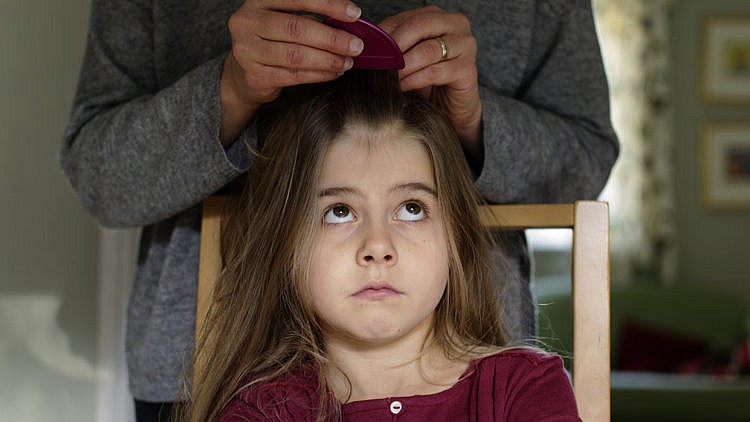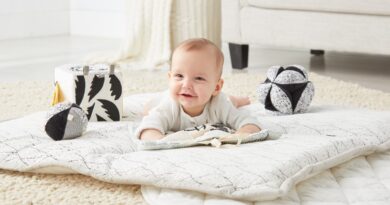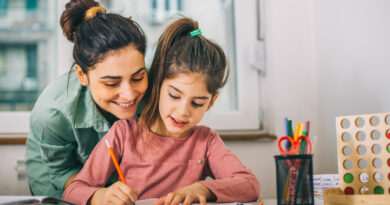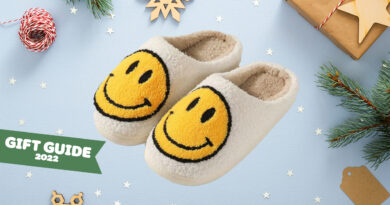Everything to know about the new head lice guidelines (put down the mayo!)
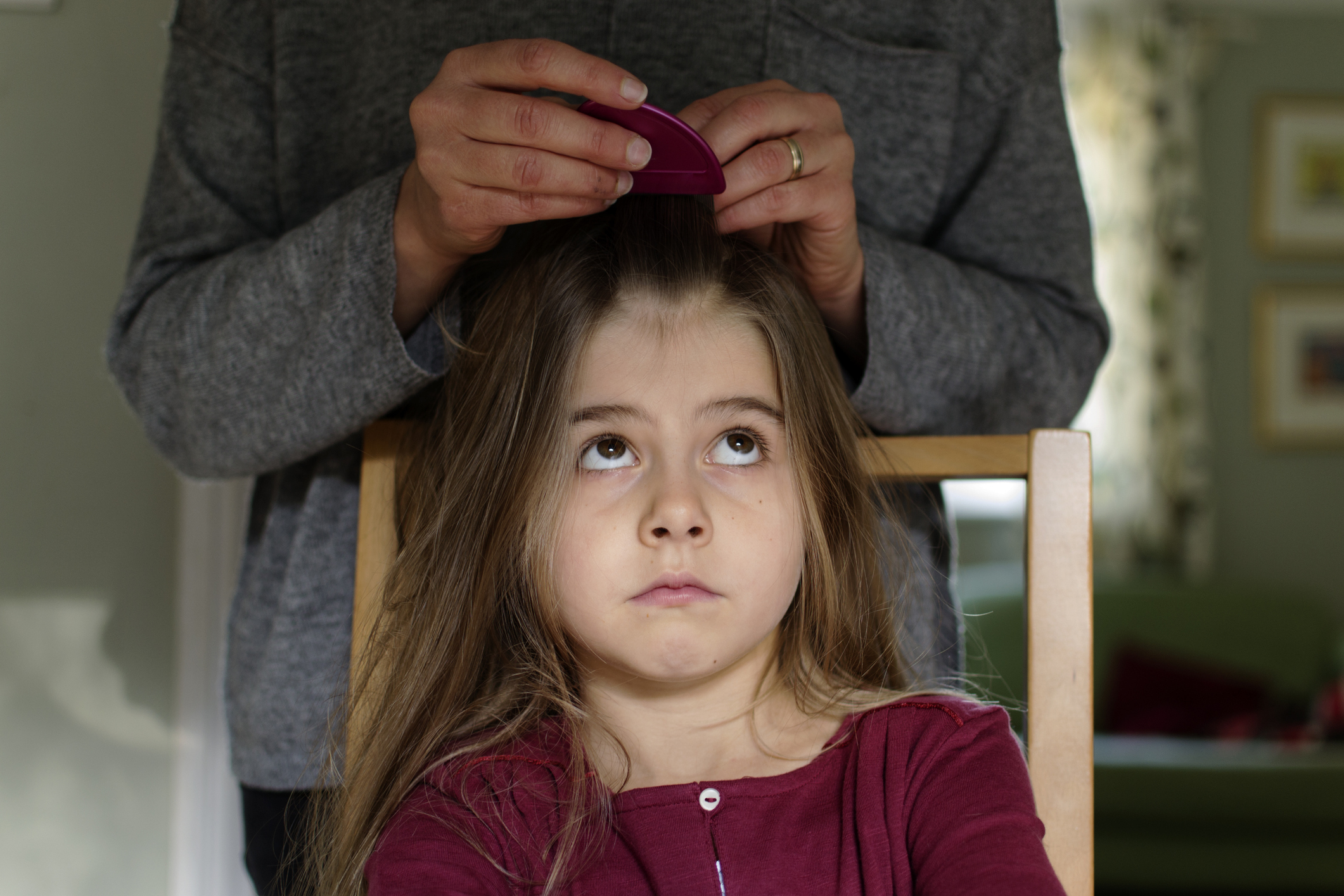
If you’ve had a kid in school for long enough, you’re probably familiar with some version of this phrase: “Your child may have come in contact with someone who has head lice.” Finding that printed on a piece of paper and tucked inside your child’s backpack may send you spiralling into nightmare territory.
Don’t let it. While lice are certainly a bummer, the good news is they don’t carry viruses or bacteria that can make you or your child sick. What’s more, the American Academy of Pediatrics (AAP) recently changed its guidelines to discourage keeping a child out of school due to a lice infestation.
“Head lice are an unpleasant part of the human experience, but they can be successfully managed and are no reason for a child to miss school,” Dr. Dawn Nolt, lead author of the October report that prompted the updates, said in the official release.
With a bit of know-how and the right products, you can treat head lice at home and rid your family of these unwanted visitors.
What is head lice?
Head lice are small, wingless insects that live on the human scalp and feed on the blood of their hosts (ugh!). A single bug is called a louse, while the term for multiple bugs is lice.
Where do lice come from?
Contrary to popular belief, lice aren’t a result of poor hygiene. In fact, head lice actually prefer clean hair as it is easier for them to attach and lay their eggs. They also don’t jump or fly—they must crawl in order to spread.
“Head lice are spread mostly from person to person through direct head-to-head [or] hair-to-hair contact, or occasionally from sharing of [objects that touch the head],” says Dr. Albert Yan, a professor of paediatrics and dermatology and co-author of the new AAP policy. Yan says that this can happen, for instance, when kids are napping or playing together.
Because lice don’t jump or fly, it’s not necessary to isolate kids at home. While “no-nit” policies are still common in many Canadian school boards, the Canadian Paediatric Society (CPS) updated its guidelines in 2008 to say that such policies are no longer recommended.
“Kids can attend school so long as appropriate precautions are taken to avoid head-to-head contact,” says Yan.
The CPS does recommend that families of children in the same classroom or child care group where a case of active head lice has been detected should be alerted.
What does head lice look like?
What lice look like will depend on where they are in their lifecycle. Adult lice are about the size of a small ant with pointed bodies. Head lice come in a range of colours from tan to grayish-white, and appear different shades on different types of hair. The same thing goes for nits, which stick to individual hair and are slightly smaller than a sesame seed.
What are the symptoms of head lice?
Lice symptoms include bites, which appear as small red bumps on the head, neck, and shoulders. Lice bites are often itchy, which is why head-scratching is one of the hallmark signs of lice in children (although an infestation can be present for 4 to 6 weeks before the itching starts). It is possible to have lice without itching, in which case, you should do a head check.
How to check for lice
If you suspect your child has lice (or you got that notice) you should inspect their hair. You might see the bugs moving about while brushing, but they can also be hard to spot. You’re more likely to spot nits along the hair shaft, particularly around the ears and nape of the neck. Part your child’s hair in sections, and move from one side to the other, and from front to back.
Those of us of a certain age might remember the occasional lice check happening at school, but the AAP states that head lice screening programs in schools have not been proven to have a significant effect on the incidence of head lice in the school setting, are not cost-effective, and may stigmatize children suspected of having head lice. Instead, the group suggests that schools offer educational programs for families to help increase understanding and management of head lice in the community.
Lice vs. dandruff: How to tell the difference
Both lice and dandruff can underlie an itchy scalp, so it’s important to know the difference before initiating treatment. Whereas lice lay eggs on the hair shaft, dandruff is mostly visible on the scalp before flaking and falling off. Lice and nits are more oblong and pointed than dandruff flakes which look like, well, flakes.
Hair casts, which are elongated cylindrical pieces of dandruff that encase a hair shaft, could easily be mistaken for nits, but nits are oval shaped and much harder to remove.
What kinds of lice treatments are effective?
The CPS recommends products containing pyrethrins and permethrin, chemicals known as pediculicides, which are pesticides designed specifically for killing lice. These products are available most commonly as lice shampoo, which is applied to the scalp and hair, left to sit, and then rinsed out. The AAP, however, recently updated its guidelines due to the increasing resistance of lice in certain areas of the country to these products, as well as the addition of new products to the market.
“I have a low threshold for moving patients to some of the newer treatments which have a good safety track record,” says Yan. Unfortunately, most of the newer treatments highlighted in the updated AAP guidelines aren’t available in Canada, like topical ivermectin, topical spinosad, and over-the-counter products containing dimeticone.
There are some treatments that are available in Canada but not the U.S., including isopropyl myristate 50%, sold under the brand name Resultz, a hair rinse that kills lice by dissolving the waxy exoskeleton of lice. It is suitable for children over the age of four. Canadians can also access a non-insecticidal product containing silicone oil dimeticone (Nyda), which is OK for children over the age of two.
Whatever treatment you decide on, Yan notes that carefully communicated instructions on the proper use of products are important. He also noted that since many products don’t kill lice eggs, a second application at the proper interval according to manufacturer’s guidelines may be needed, and manual removal of eggs after treatment could be useful—and ease the social stigma of being the kid with lice.
Another treatment method recommended by the AAP, especially if the child is too young for the above treatments, or if parents do not wish to use a pediculicide (which, it should be noted, are believed to have a very low toxicity for humans) is wet combing. This involves the removal of lice by combing wet hair with a fine-toothed lice comb for at least three weekly cycles, to match the 21-day lifecycle of a louse. (For its part, the CPS does not recommend wet combing as an effective treatment when compared to insecticidal options.)
Which head lice treatments should parents avoid?
There are a lot of home remedies for lice that many a desperate parent has tried in order to get some relief, but while some may be effective, some can be downright dangerous.
“There are a number of herbal remedies that include essential oils that have been touted as effective head lice treatments. Unfortunately, there is not much scientific data yet supporting their use, and there is a risk that some of these may pose a risk for [irritation],” says Yan. “In addition, some essential oils [like lavender] have been found to have some properties that may cause hormonal disturbances.”
In the U.S., the AAP discourages the use of products without FDA approval for lice treatment due to lack of evidence of efficacy. The CPS goes further, saying: “Using flammable, toxic and dangerous substances like gasoline or kerosene to treat head lice or using products intended for treating lice in animals are not recommended under any circumstances.”
What about occlusive substances like mayonnaise, petroleum jelly, or mineral oil? While the CPA acknowledges that applying a thick coating of such agents to the hair and scalp and leaving it on overnight would theoretically suffocate the bugs, topical insecticides are far more effective.
Another popular at-home treatment is to use a blowdryer to heat and dry out the lice and nits in order to kill them. While there is an FDA-approved device for just this purpose (known as the AirAllé or Lousebuster) it is expensive and requires special training to use properly. A regular blow dryer is not recommended as investigators have shown that wind and blow dryers can cause live lice to become airborne (eek!) and potentially spread to others nearby, like, for example, you.
What about resistance to OTC treatments?
Yan says that since not all communities will have the same level of resistance to the permethrin or pyrethrins in some OTC products, it’s reasonable to try these first.
“If they don’t seem to be working, it is probably time to consider using the dimethicone-based treatments,” he says, “or to check in with your paediatrician or dermatologist to consider other prescription products.”
Can you prevent head lice?
While you’re unlikely to prevent head lice entirely, you can lessen your child’s chances of catching it by encouraging them not to share things that come in contact with the head such as combs, hats, hair accessories and pillows. Regular checks are the best way to detect and treat an infestation early, before it spreads to others.
The post Everything to know about the new head lice guidelines (put down the mayo!) appeared first on Today's Parent.

